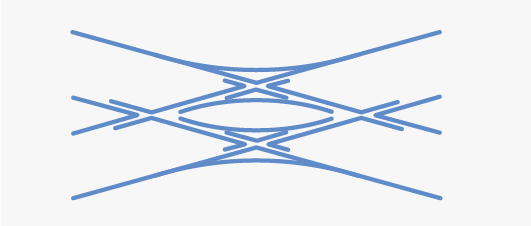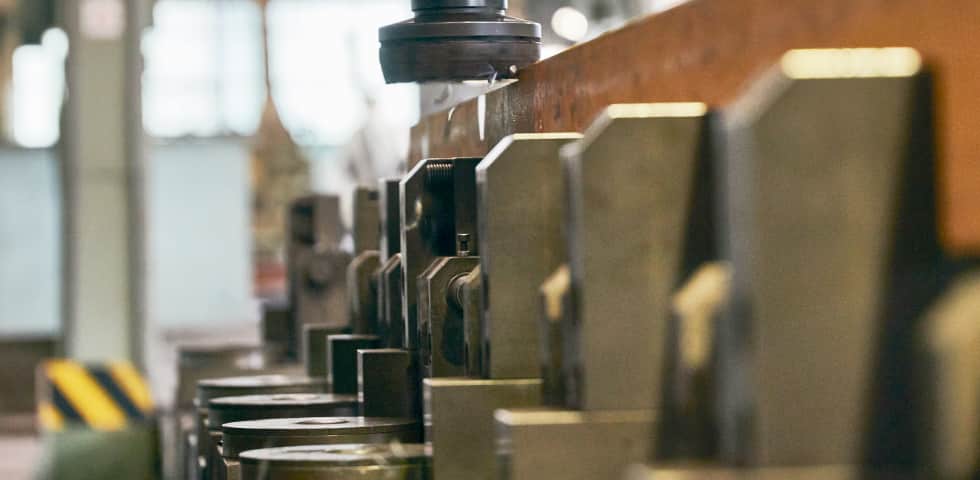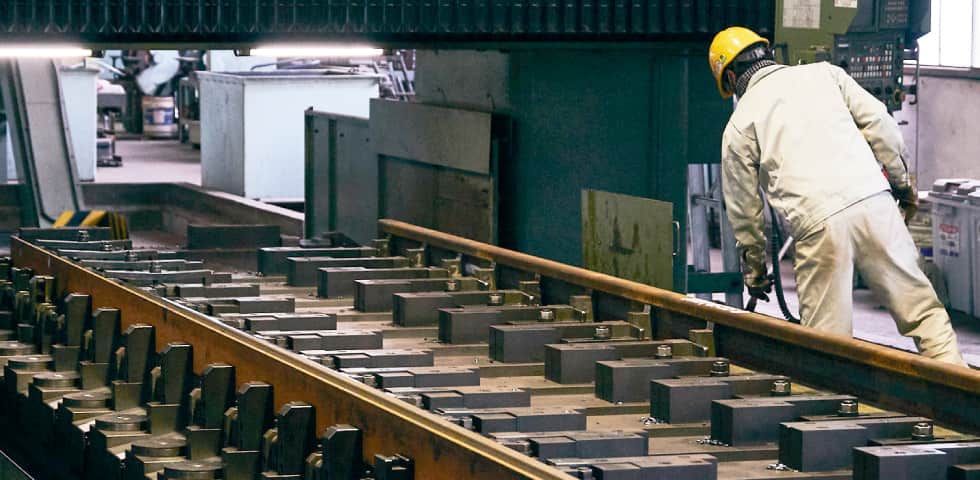Yamanaka Group
Turnouts
A Wide Range of Turnouts
Points: Where Trucks and Turnouts meet
Turnouts are key elements in building the vast network of railways.
Turnouts are constructed from an enormous number of parts, and each part needs to be precisely structured and durable.
The parts used to build a turnout can be roughly divided into points, crossings, and guards. The number of parts used in just one turnout can range from hundreds to thousands, or even over ten thousand.
Why Is It so Important?
Tracks are important in many ways
Turnouts are key elements in connecting the various tracks used to build the network of railways that are an essential part of social infrastructure. These turnouts are a part of the track equipment. They are used to guide the train and its carriages in the intended direction, such as by diverging a single track into two or more tracks, and intersecting two tracks.
Turnouts are probably not so visible to the people who use railways, but they can be found inside train stations where they are used to direct trains to and from the main track and each platform, and to a side track to wait for passing trains. Turnouts are also used at rail yards where train carriages are switched around, and in many other places. A variety of turnouts can be found at terminal stations where tracks converge and diverge from many directions. These turnouts are used to direct trains and carriages within the station’s limited area.
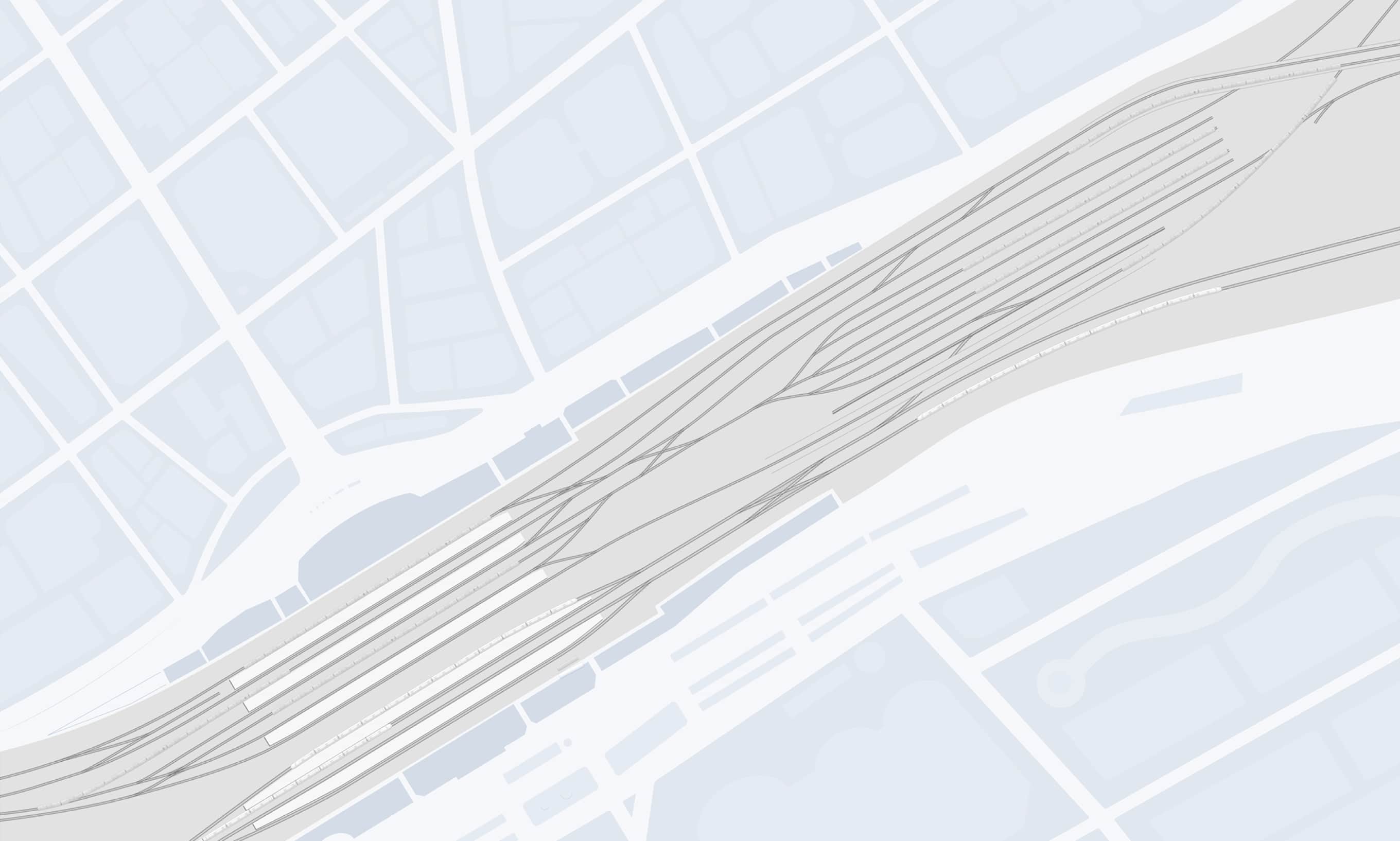
Please scroll through to view.
Single turnout
This is a basic turnout shape, in which another single track diverges either to the right or left side from a straight track.
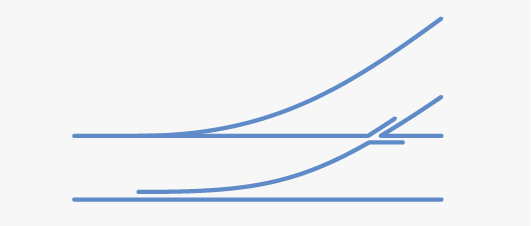
Single slip switch
This track structure has a crossover placed on one side of a diamond crossing.
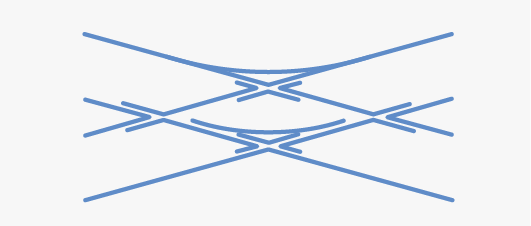
Diamond crossing
Two tracks intersect in a diamond-like pattern.
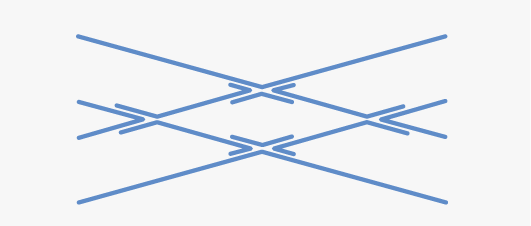
Split turnout
A straight track diverges symmetrically in two directions to the left and right sides.
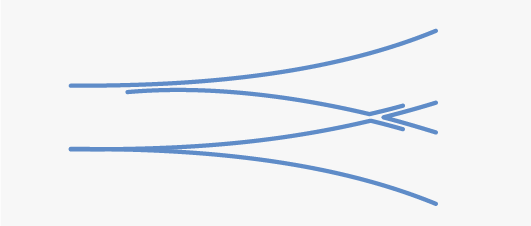
Crossover
In this track structure, two side-by-side tracks are connected using two turnouts.
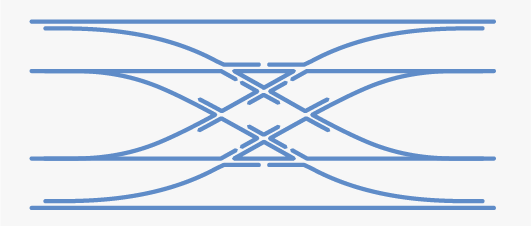
Run-over type turnout
A straight or curved main line runs over the rails and diverges. This type of turnout is usually used to divert train carriages to the safe side of the track to prevent them from running on to the main line.
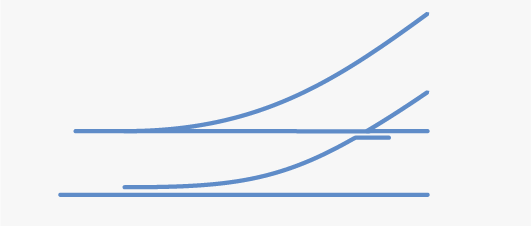
Double-curve turnout in opposite direction
Another track from a curved track diverges toward the outside of the curved track.
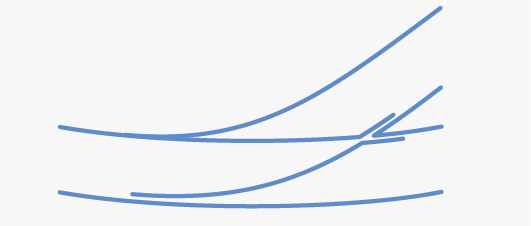
Double-curve turnout in same direction
Another track from a curved track diverges toward the inside of the curved track.
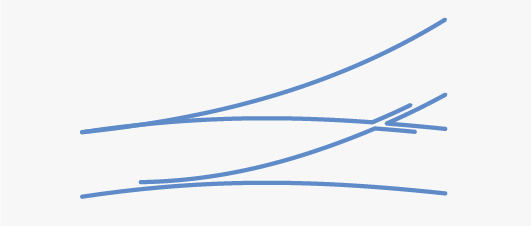
Unsymmetrical split turnout
A straight track diverges asymmetrically in two directions to the left and right sides.
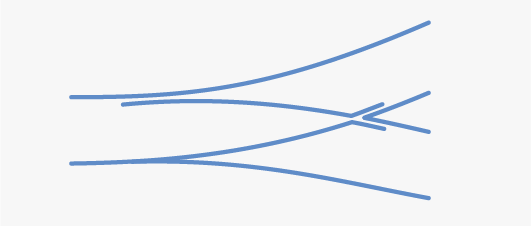
Double slip switch
This track structure has a crossover placed on both sides of a diamond crossing.
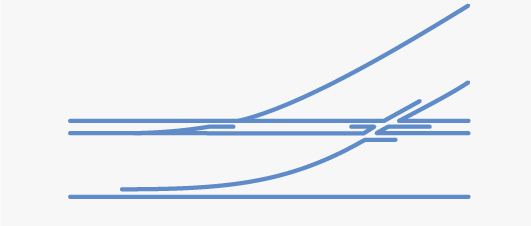
Scissors crossing
Two side-by-side tracks intersect using double crossovers. This turnout basically comprises four single turnouts and a diamond crossing.
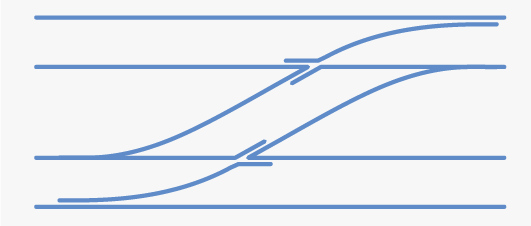
Mixed gauge turnout (with three rails)
This track structure diverges into a three-rail track. The image shows narrow gauge tracks diverging from the three-rail track, but different tracks can be combined to create a variety of structures.
